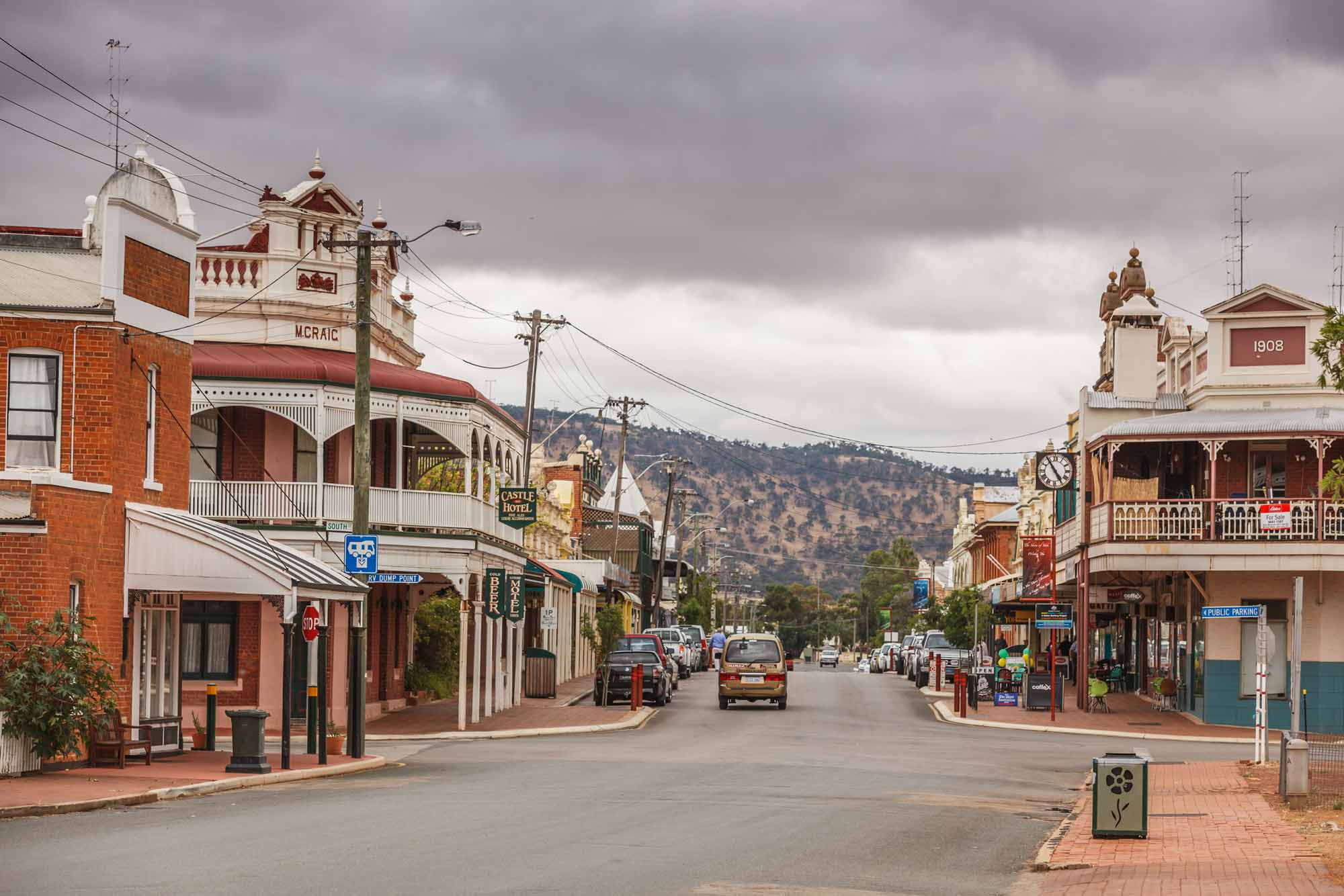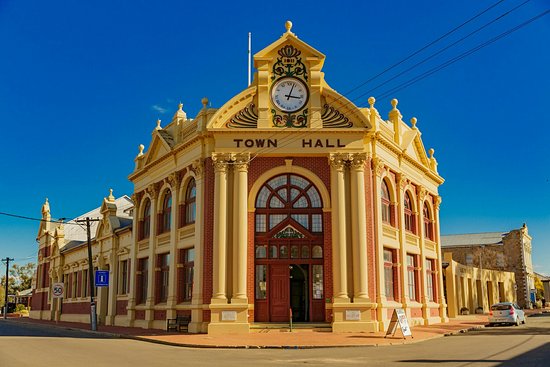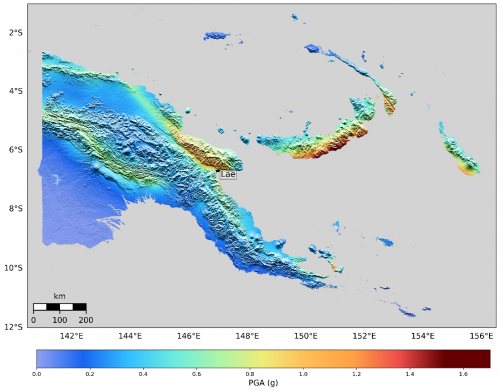Case study Assessing the resilience of ageing buildings against earthquake hazards
How our collaborations and science improved the safety of communities in York, Western Australia.
Page last updated:1 July 2021

The problem
Vulnerability of damage to heritage buildings in earthquake hazard zones
Up to the mid 1990s, the risk of earthquakes was largely ignored in the design of Australian buildings. As a result, some buildings in Australian communities are more vulnerable to damage, particularly in the case of unreinforced masonry (URM) buildings that have been severely damaged during events such as the 1954 Adelaide, 1968 Meckering, 1989 Newcastle and 2009 Kalgoorlie earthquakes.
This is of particular concern for Western Australia’s heritage listed town of York, which by Australian standards, has a higher likelihood of damaging earthquake events.
This development of solution information and products was achieved through two co-funded projects. The first was co-funded by Geoscience Australia and the Bushfire and Natural Hazards Cooperative Research Centre. The succeeding project was co-funded by Geoscience Australia and by the Federal and WA State governments under the Natural Disaster Resilience Program. In these, Geoscience Australia collaborated with the University of Adelaide, the University of Western Australia, the WA Department of Fire and Emergency Services (DEFS) and the Shire of York.
The solution
Working together to improve building design information, we:
- Provided a detailed earthquake hazard and risk assessment for the township of York.
- Designed retrofit measures for historical building types common in the community of York, to ensure their heritage buildings can withstand likely earthquake events.
- Developed realistic earthquake scenarios and modelled the potential impacts to inform emergency response and recovery plans.
- Utilised the Australian Natural Disaster Resilience Index which is available to support mitigation efforts in other WA communities, and nationally.
- Developed a suite of retrofit information products directed at a range of decision makers. These included property owners, policy and emergency management officers, and building professionals on the development of specific retrofit solutions. Significantly, it included retrofit measures for severe wind that could be cost-effectively undertaken in conjunction with earthquake retrofit.
Read the full reports and the information products:
- Earthquake Mitigation of WA Regional Towns: York Case Study Final Report (2020)
- York Earthquake Building Mitigation Implementation Project: Final Report (2023)
- Resisting the Shake, a resource for building owners
- Retrofit for Older Masonry Buildings, a resource for the architecture, design and construction industries
- Earthquake Resilient Communities, a resource for Government and emergency management organisations
- Wind Retrofit, a resource that applies the same retrofit principles to help protect buildings from wind damage
Geoscience Australia works with state and local governments and the emergency management industry sector across Australia to develop local hazard assessments. For more information, contact hazards@ga.gov.au
How we got there
Surveying, assessing, evaluating and forecasting to determine earthquake risk
The entire town of York, including its businesses, were surveyed as part of this project. The vulnerability of buildings was assessed, both with and without earthquake retrofit, using research from an associated project: Cost-effective Mitigation Strategy for Building-related Earthquake Risk.
Using science and engineering to design retrofit measures to strengthen buildings
Geoscience Australia’s National Seismic Hazard Assessment (NSHA 2018) - the benchmark in Australian earthquake hazard data – was used to determine earthquake hazard in York.
Based on the likelihood and intensity of earthquake events, retrofit measures were virtually applied to heritage buildings and the cost effectiveness was assessed for various levels of strengthening investment.
We developed and published mitigation information products tailored to a range of decision makers to support retrofit investment decisions and to inform the implementation.
Modelling earthquake scenarios to forecast potential impact
To understand what the potential impact would be should an earthquake strike, we modelled three credible earthquake scenarios. Harnessing our hazard, exposure and vulnerability information, combined with detailed modelling we demonstrated the impact to the historical buildings with and without retrofit measures. The reduced damage related losses to buildings and contents through mitigation, along with a range of other community costs, were also assessed.
This provided emergency services and the local government an understanding of the impacts to the community and what emergency response and community recovery requirements would be should one of these earthquake scenarios happen.
Looking forward
Supporting evidence-based decisions for government, industry and the emergency services
- The Shire of York and the Western Australian government are using the insights from this project to make evidence-based decisions on what retrofit measures could be implemented on the historical buildings of York, to safeguard the York community and the historical town from earthquake hazard now and into the future.
- Geoscience Australia is collaborating with WA Government agencies, state infrastructure operators and the Global Earthquake Model Foundation (Italy) to undertake research on earthquake risk reduction in the high hazard region of the Yilgarn. This includes seven further communities in addition to York and their supporting critical infrastructure. The mitigation information and products developed for York are being directly applied as part of this work.
- Geoscience Australia is continuing to update our science, data and tools reflecting advancements in science, technology and best practice so we can ensure Australian communities are as safe as possible from the consequences of natural hazard events.
How you can strengthen your earthquake resilience
Collaborate with us
Geoscience Australia collaborates with governments, academic researchers, industry organisations and communities to develop targeted impact, vulnerability and risk assessments, to underpin planning and preparedness to natural and man-made hazards.
Whether you're planning a new community development, building or retrofitting infrastructure, or wanting to invest in strengthening community resilience - our targeted assessments and information products provide you the evidence you need to make informed decisions.
Contact hazards@ga.gov.au to learn more about Geoscience Australia's community safety work in the field of mitigation and resilience.
Earthquake resources
Use our earthquake data, products and resources to determine your region’s high-risk areas and make better-informed natural hazard planning decisions.









